The biology of brown algae
Brown algae play an important role in the life of the foreshore. Their way of life clinging to the rock and the particular living conditions of the foreshore imply a particular distribution of these algae.
The classification of brown algae
Neither plant nor fungus, but what are these brown algae? Not all algae belong to the same group of organisms. To differentiate between groups of algae, we generally speak of "red", "green" or "brown" algae. But be careful, you should not always rely on it, some times algae can have a different color than the one qualifying their group !
The brown algae that can be observed on the foreshores belong to the Stramenopile group. Just like the plants in your street, they produce their own organic matter by photosynthesis. To capture solar energy, they have chemical compounds that are chlorophyll and flucoxanthin pigments. Despite the presence of chlorophyll, to which we owe the green color of plants, these algae are brown, this being due to fluoxanthin.
The distribution of brown algae on the foreshore
The algae monitored in BioLit are brown algae of the Fucales group. They are large, brown in color, and are found in the tidal zone called the foreshore, which is both land and sea.
They are organized in algal belts, i.e. they are arranged in layers all along the foreshore according to the variation of life conditions (wind, swell, tide duration, temperature, salinity). Each plant species has a zone, a habitat, determined by these physical parameters, which will structure the ecosystem.
The organisation of the foreshore
The foreshore is subject to very significant physical changes every 6 hours or so as the water recedes. The algae species will then settle and develop in the zone that corresponds to their capacity to resist :
- drought,
- variations (increase or decrease) in temperature,
- or to variations in salinity, which can be very significant.
These different physical parameters are defined as stress factors for the plant and animal species living there. Each plant species then has a zone, a habitat, determined by these physical parameters. In these zones, also called "potential habitat", several species can try to settle... The most competitive species will preferentially settle in the lowest part of the foreshore, which is the least stressful zone for the physiology of the species.
The size of the swell and the prevailing winds can also influence the distribution of species settled on the foreshore. Indeed, some species are more or less sensitive to powerful waves, just like repeated gales. Several "modes" can thus be distinguished, defined by these hydrodynamic parameters: the sheltered mode, the semi-sheltered mode and the battered mode. In the sheltered mode, we generally find all the algal belts well represented. The less sheltered the shoreline, the fewer species there are, with the most fragile species disappearing first.
The organisation of the coastline
The coastline is organised in successive stages:
- The supra-littoral stage is not reached by the high tide, it is humidified by the sea spray (air currents charged with salt water droplets); the species that live there cannot stand being submerged;
- The mid-littoral stage is submerged at each high tide and uncovered at low tide. The mid-littoral stage is submerged at each high tide and uncovered at low tide. This stage is populated by more versatile organisms that can withstand prolonged periods of immersion and drought. The communities are dominated by certain species of rockweeds, notably the hoary rockweed (Pelvetia canaliculata), the spiral rockweed (Fucus spiralis), the bladder rockweed (Fucus vesiculosus) and finally the toothed rockweed (Fucus serratus). In particularly protected environments, the knotted wrack (Ascophyllum nodosum) generally dominates the lower mediolittoral stand in place of the bladder wrack (Fucus vesiculosus).
- The sub-littoral stage remains submerged even at low tide (except during high tides), and the species that live there, such as the kelp or the "sea bean" (Himanthalia elongata), can only withstand short periods of exondation and need to be submerged all the time.
This tiering is found on all coastlines, whether they are under the pronounced influence of the tides, as on the Atlantic coast, or along the Mediterranean Sea where this phenomenon is less pronounced.
